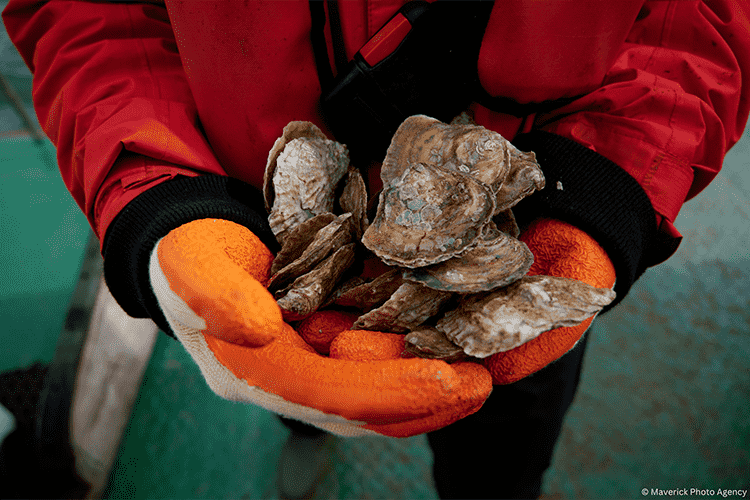
A major marine restoration project, Restoration Forth is working with communities to restore seagrass habitats and native oyster populations to the Firth of Forth
Sponsored post
It’s easy to lose sight of the importance of our marine environment to the ecosystem, local communities and the transition to a low carbon economy; but the ground-breaking Restoration Forth project is helping to demonstrate and highlight why it’s essential.
At the ScottishPower Foundation, we’re incredibly proud to be helping to restore seagrass meadows and native oysters in the Firth of Forth (the estuary sandwiched between Fife and Edinburgh) through our part-funding of the Restoration Forth project, a collaborative partnership with charities and academic organisations.
This grant comes from our Marine Biodiversity Fund, which was created in the year of COP26 to support impactful projects that help to tackle climate change. It’s the first grant from this fund and our largest single award to date – £600,000 over three years.
It’s a particularly proud moment for me – as recently-appointed Chair of the Foundation – because it brings me full circle to where I started my professional journey. My first degree was in Applied Biology, where I specialised in water ecology and fisheries; so, to be involved in funding a project that brings communities, scientists and experts together to create a blueprint that will lay the path to restore and sustainably manage seagrass for years to come is really special.

I was recently invited to take part in one of the seagrass seed processing sessions. It was great to get hands-on and sort through the seagrass to find the seeds with one of the project’s Community Hubs – and this is one of the things I love most about this project; the focus on engaging the local community, celebrating and using local knowledge and enthusiasm.
Restoration Forth is creating a range of opportunities for local communities to reconnect with the sea and learn how to look after the marine environment and its importance to the local area. Seagrass and oysters both once flourished in the Forth. Seagrass is known as the ocean’s
‘unsung hero’ and a vital tool in managing climate change, while oyster reefs filter pollutants from the water, improving water quality. This combination provides a safe habitat for a vast array of marine life.
As we celebrate the second year of the project, we’ve now reached a key milestone and are starting to see some of its incredible benefits come to life.
This summer, the scientists found that newly planted seagrass was germinating within just a few months. This is not only great news for the local ecosystem but also for us on land, as seagrass is brilliant at removing carbon, helping us on the journey to Net Zero.

In September, we saw the reintroduction of the first set of native oysters into the Firth of Forth – the first time they’ve been there in 100 years. They were sourced from Ullapool where a group of volunteers helped carefully clean them before they were brought to the site, where an excellent team from Heriot Watt University removed anything that could risk the biosecurity of the water. The oysters were then deployed into the sea where their survival and growth will be monitored by divers over the coming months.
Again, that community sprit has rallied around the native oysters. One Community Hub hosted an Oyster Celebration Day, featuring a local choir who learned traditional oyster songs, and interspersed their singing with a powerful narrative of the cultural and ecological significance of oysters. Another community initiative, an exhibition called ‘100 species’, showcased the diverse and wonderful plethora of marine species found in the Firth of Forth. Community volunteers created art, fashion, pottery and so much more to represent those species – as well as their hopes for a brighter future for them. It was another wonderful example of the project team’s commitment to encouraging local participation.
I’ve been so impressed with the enthusiasm, commitment and expertise of the project team and their volunteers. The progress this year has been so encouraging to see, packed with landmark moments: native oysters have returned to the Forth and around one hectare of seagrass has been restored. But when we reviewed this project at the application stage, we knew it was quite high-risk. There was no guarantee of success, but it was ground-breaking and innovative, and we knew critical lessons could be learned for the future, so we decided to support it.
And we’re so glad we did, because funding on this scale can leverage additional support from other funders in the grant-giving sector and help projects, which might not otherwise get off the ground, to thrive. Our hope is that the learning from this project can be used as a template for future restoration projects.
We want to continue to build on this success and create a lasting legacy in the community through continued education and events to share how important this project is. I look forward to next year with positivity and a quiet confidence that I’ll be able to say the Restoration Forth project has reached its aim of replanting four hectares of seagrass meadows with a total of 30,000 oysters back in their natural habitat.
Anita Longley FICRS is Chair of the ScottishPower Foundation. Find out more about the ScottishPower Foundation and Restoration Forth at scottishpower.com




